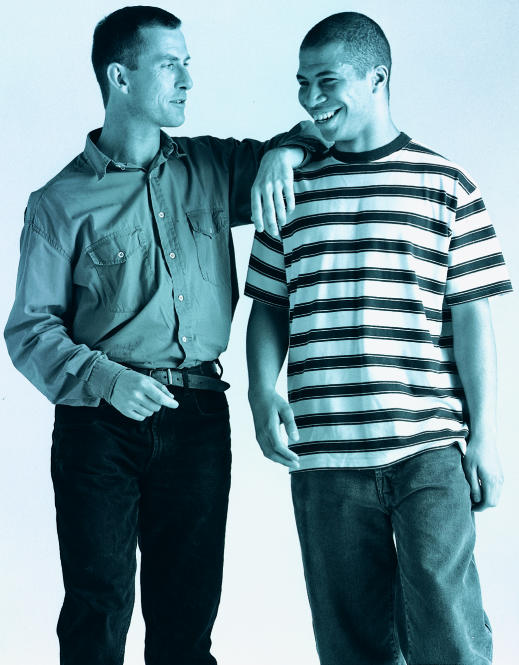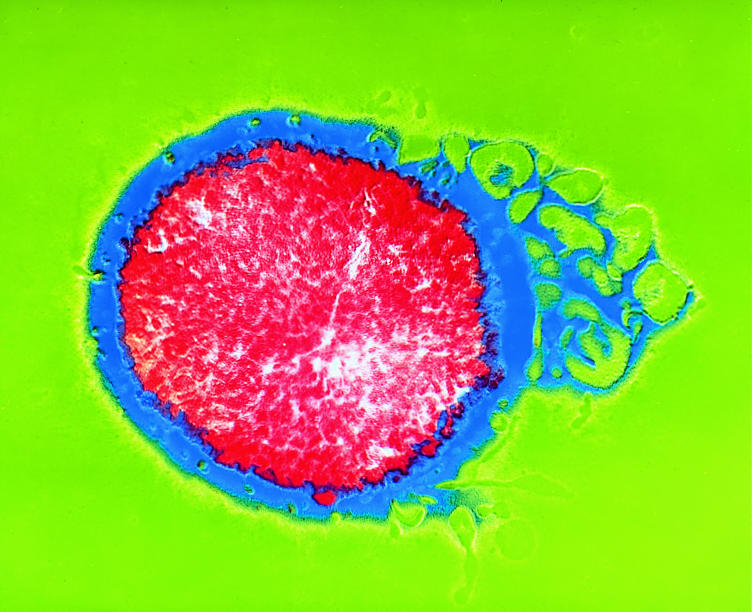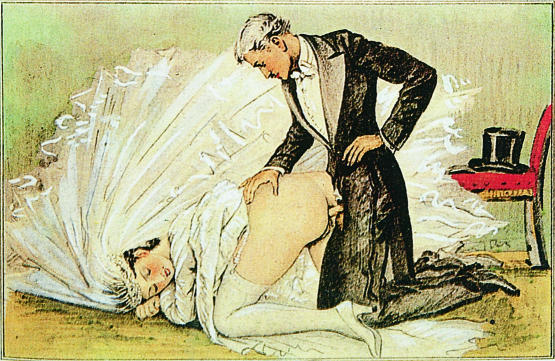The range of sexual dysfunctions encountered in gay men and lesbians is the same as that found in men and women in general, and the skills needed to help them are the same. That said, there are areas of concern, both for patients and doctors, that merit particular consideration. 
People may encounter problems when they become aware of their homosexual orientation and try to match it to their view of an ideal self. If this occurs in adolescence it may be useful to offer counselling to help with the readjustment in life that may be required. However tolerant our society may become, being openly gay still has major implications for future career and family life. Help at this time can include (for men especially) information about safer sex, since sexual exploration may present a greater risk of exposure to HIV.
Although many gay men and lesbians are aware of their orientation from their earliest sexual thoughts, a sizeable minority do not discover their orientation until later in life, perhaps in a failing marriage and with the responsibilities of parenthood. These people require careful and compassionate counselling. Some choose to remain married, and the couple may need help to reorganise the basis of their heterosexual relationship. The counsellor must be seen to be completely impartial and not encourage any particular outcome.
Avoiding prejudice
Presumptions—When counselling gay people about sex, it is important not to have preconceived ideas about their sexual repertoire. Perhaps as many as a third of gay men choose not to practise penetrative anal sex on a regular basis,1 and the traditional division of gay men into “active” and “passive” is not born out by experience—most gay men who do have anal sex will play either role. The assumption that the passive partner is somehow less “male” or less “aggressive” is also largely a myth. Similarly, in lesbian sex either partner can be psychologically “active” regardless of whether sex play includes penetration with a dildo.
Counselling gay men and women
Be honest with yourself; if you are uncomfortable with gay people refer the patient to someone else
If an adolescent is confused about his or her sexuality try to help the patient to adjust
Do not have preconceived ideas
Take the opportunity to discuss safe sex with gay men
A married man or woman might benefit from couples counselling
Sexual orientation is not always fixed. Some people change their mind
Disapproval—The days when physicians would try to impose their own moral standards on their patients should be long past. If individual clinicians are aware that they are uncomfortable with the issues of gay sex and relationships then they should refer the patient on to somebody else. It is difficult to focus on the relevant clinical issues if you are having to concentrate on your own discomfort and trying not to express it.
Inaccurate advice—It is unwise to advise patients on subjects that they may know more about than you do, and if anal sex is not something that you know much about it is better to admit this rather than offer inaccurate or misleading advice. Local genitourinary medicine clinics should be aware of what services are available locally and which are considered as “gay friendly” and can be used as a source of reference.
Patients’ reticence—Even if a doctor is comfortable with homosexual patients it does not follow that such patients are comfortable with the doctor. Gay men face practical problems, such as a future application for life insurance, which mean that some patients will not wish to disclose their sexual orientation to their general practitioner, no matter how sympathetic and confidential.
Sexual activities
It is unclear what proportion of men and women have same sex experiences in their lives. Studies have been fraught with methodological errors and with researchers trying to confirm their own preconceptions. Recently, the national survey of sexual attitudes and lifestyles estimated that 1% to 6% of the male population had had such experiences, depending on how homosexuality was defined.2 These values are lower than many other estimates, probably because of the method of the study.
Gay men and lesbians have as wide a range of sexual lifestyles as does the general community. Some homosexuals live in a stable partnership and never have sex elsewhere. Others have a strong, committed relationship but with an open acknowledgment that one or both partners also have sexual liaisons elsewhere. Infidelity in a supposedly closed relationship is probably just as common as among heterosexuals. Single gay men have a reputation for having many sexual partners, and in urban communities the opportunities for this are widespread. Casual or anonymous sex can provide sexual gratification without the complications of a relationship.
Sexual dysfunctions should be assessed objectively without a moral stance being taken on the manner in which sexual expression is likely occur.3 Similarly, casual sex can be the reason for patients, male or female, to seek help, realising that, although they are sexually fulfilled, they are “missing out” on the emotional aspects that can be associated with sex as part of a relationship. There can also be considerable distress for those who find it difficult to establish same sex relationships that could progress to become sexual and committed.
Spectrum of activity
Gay men—Anal sex remains a taboo subject even for many professional sexual discussions; however, it is widely practised in most communities. Sexual activity is protean in all groups, and gay men are no different in this. Mutual masturbation, oral sex, and anal sex can be considered core activities, although many gay men do not practise anal sex at all.
Lesbians—Mutual masturbation, oral sex, caressing, and penetration with fingers or sex toys can be considered as core activities. Some couples may choose more vigorous forms of penetration such as “fisting,” in which the hand and part of the forearm is introduced into the vagina, though this is probably no more common than in heterosexual couples.
Terminology
Once they have sought help, gay men and women are often less reticent in discussing at length and in detail specific sexual acts. It is therefore useful for a doctor to be forearmed with a basic vocabulary of gay sex, although many men and women who perform these activities will lack the words to describe them, and few people of any orientation are likely to have all the activities in their personal behavioural repertoire.
A gay sexual vocabulary
B/D—Bondage and domination. The use of power play, but not pain, for sexual pleasure
Back room—That part of a sleaze bar (see below) where sex can take place
Cottaging—The use of public toilets as a venue for meeting sexual partners
Cruising—To be actively looking for a sexual partner
Fisting—The insertion of a whole hand into the rectum or vagina for sexual stimulation
Rimming—Oro-anal contact for sexual stimulation
Sleaze bar—A bar or pub where sex can be performed on the premises
S/M—Sadomasochism, the use of pain in consensual sexual acts
Vanilla—Sex that does not extend beyond affection, mutual masturbation, and oral and anal sex. This is the commonest mode of gay sexual expression
Water sports—Urination as a sexual pleasure
The terms “active” and “passive” are best avoided if a doctor needs to determine the content of a sexual act, such as when considering the risks of sexually transmitted disease. The doctor’s concerns are anatomical placement and not the psychological roles implied by these words. Most gay men will not fit exclusively into either of the roles implied by the old fashioned heterosexual model, and if the words are applied to oral sex great confusion may result. Gay male oral sex includes two sexual acts, fellatio and irrumation—cock sucking and face fucking respectively—depending on whether it is the mouth sucking or the penis thrusting that is the main act. In both cases there is a penis in the mouth, but the “active” partner differs. When it is necessary to determine who did what, it is easier to talk about insertive and receptive partners to avoid confusion.
Problems
Erectile dysfunction is being seen increasingly, usually of an organic type, in those with late stage HIV infection, although whether this is an effect of the virus or of the antiviral drugs is not yet clear.
Facts and figures
Two thirds of gay men have anal sex
Ten per cent of heterosexual couples regularly have anal sex
The estimate that 6% of the male population are gay may be an underestimate
No one knows how common sexual problems are in this group
Their presentation varies widely from clinic to clinic
Erectile dysfunction is increasingly seen in men infected with HIV
Retarded ejaculation is common
Piles and anal fissures are no more common in gay men than in the general population
Vaginismus, anorgasmia, and low sex drive occur in lesbians as in heterosexual women
Retarded ejaculation is common in gay men and may be related to fears of contagion induced by the “safer sex” campaigns.
Piles caused by dilation of an anal venous plexus are no more common in those having receptive anal sex, and are usually caused by straining at stool.
Anal fissures usually arise from constipation rather than receptive anal sex. However, if they are a sexual problem they generally respond to the use of an anal dilator. The medical St Mark’s type is readily available, and the self retaining version is sold as a sex toy called a “butt plug.” The smallest size works well if left in situ for several hours each evening. A topical anaesthetic (such as EMLA cream) may be used on the first few occasions, until healing is under way.
Female sexual problems—Like heterosexual women, lesbians can suffer from vaginismus, primary or secondary, and from anorgasmia and low sexual drive (see earlier article by Butcher).
Infections
Sexually transmitted diseases are common in people with many sexual partners, which includes some homosexual men. The ease of transmission of most sexual infections is similar for vaginal and anal sex, with the exception of HIV, which is much more easily spread by anal sex. Strong condoms greatly reduce this risk. Oral sex, while a recognised route of transmission, is considered to be relatively safe for HIV, but it is a common means of acquiring gonorrhoea and non-specific urethritis. Lesbians are considered a low risk group for HIV infection.
Infections associated with homosexual activity
Sexually transmitted diseases are common in all gay people with a high number of different partners
Their management is the same as in the heterosexual community
The transmission of infection through vaginal and anal intercourse is no different, apart from HIV
Hepatitis A and Giardia are spread through oro-anal contact
The greater incidence of hepatitis B is an indicator of a large number of partners, not of specific sexual practices
Faeco-oral spread of pathogens such as Giardia and hepatitis A are well recorded from oro-anal sexual contact. Minor episodes of diarrhoea may be related to faecal exposure, and are often self limiting. If they persist, stool culture will usually pick up any bacterial cause, and if the culture is negative it is better to treat for presumed giardiasis than do extensive investigations to attempt to prove the diagnosis.
Hepatitis B, though commoner in gay men, has not been shown to be spread by specific sexual practices and may simply be a marker of exposure to a greater number of sexual partners. The orthodox sexually transmitted diseases are managed as in the heterosexual community, although contact tracing for gay men with non-specific urethritis is less important given the rarity (2%) of chlamydia as a causative agent in gay men.
Immunisation against hepatitis A and B is recommended by the Department of Health for all men with male sexual contacts.
Anal sex
About a third of heterosexual couples in Britain are thought to use anal sex as an occasional method of sexual expression, with about 10% using it as a preferred or regular method.2 Perhaps two thirds of gay men practise anal sex as a regular part of their sexual repertoire. This means that, in absolute numbers, there are more heterosexuals having anal sex than there are gay men. There are little published data on how many heterosexual men would like their anus to be sexually stimulated in a heterosexual relationship. Anecdotally, it is a substantial number. What data we do have almost all relate to penetrative sexual acts, and the superficial contact of the anal ring with fingers or the tongue is even less well documented but may be assumed to be a common sexual activity for men of all sexual orientations.
Anatomy of the anus
The nerve supply to the anal margin is the same as that to the genitalia, coming from S4, and the pectinate line roughly marks the division between sensitivity to touch and temperature externally and perception of little more than stretch internally. The external anal sphincter is made of striated muscle and can be brought under voluntary control, whereas the internal sphincter, which is a thickening of the intrinsic muscle layer of the gut, is made of smooth muscle and is autonomic, opening in response to stretch stimuli.
Advice for patients
• Check that the patient really wants to try and is not being pressured by a partner
Anal relaxation is better than pushing harder
Reinforce the use of condoms with water based lubrication as a protection against HIV
Give instructions for anal dilatation and relaxation exercises.
Anal dilatation and relaxation exercises
• Do these exercises on your own until you are confident you can accommodate a penis
Start doing exercises in bed lying on a towel or lying on your back in a warm bath
Raise your knees towards your chest
Explore the perianal area with a finger covered in lubrication. Petroleum jelly is a good choice at this stage, but it must be substituted with a water based lubricant before intercourse with a condom is attempted
Gentle pressure with a finger moving in a circle round the anus will relax the sphincter enough to be able to insert one digit
Once the finger can be comfortably accommodated, begin to stretch the sphincter with circling motions inside the anus
After several sessions, it will be possible to insert another finger and to continue
Further dilation by relaxation, not stretching, can be achieved by the use of an anal dilator of the St Mark’s type or a self retaining “butt plug” left in situ on a regular basis.
Figure.
Lesbians may choose to be a “penetrator” in lovemaking by using a dildo and harness or other sex toys
Figure.
Casual or anonymous sex can provide sexual gratification without the complications of a relationship
Figure.
Mutual masturbation, oral sex, caressing, and penetration with fingers or sex toys can be considered as core activities of lesbian sex. (“Anything is possible!” from La Grenouillère (1907) by Franz von Bayros)
Figure.

Infection with Neisseria gonorrhoeae can occur through oral sex as well as vaginal and anal sex
Figure.
In absolute numbers there are more heterosexuals having anal sex in Britain than there are gay men. (Illustration (possibly by Paul-Emile Bécat) for An Up-to-date Young Lady (1920s) by Helena Varley)
Figure.
A self retaining “butt plug,” which can be used in anal dilatation exercises or simply as a sex toy
Acknowledgments
The picture of the gay couple is by Fly Design Consultants and reproduced with permission of the Terrence Higgins Trust. The picture of a woman with a dildo and harness is reproduced with permission of Housk Randall. The picture of gay men in a night club is by Nathan Cox and reproduced with permission of Gaze International. The electron micrograph of gonorrhoea bacterium is by A B Dowsett and reproduced with permission of Science Photo Library.
Footnotes
Robin Bell is staff grade physician in genitourinary medicine, St Mary’s Hospital, London.
The ABC of sexual health is edited by John Tomlinson, physician at the Men’s Health Clinic, Winchester and London Bridge Hospital, and formerly general practitioner in Alton and honorary senior lecturer in primary care at the University of Southampton.
References
- Coxan A. Between the sheets. London: Cassell; 1996. [Google Scholar]
- Wellings K, Field J, Johnson N, Wadsworth J. Sexual behaviour in Britain. The national survey of sexual attitudes and lifestyles. London: Penguin Books; 1994. [Google Scholar]
- General Medical Council. Good medical practice. London: GMC; 1998. [Google Scholar]







